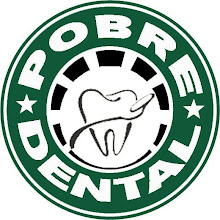
Stainless Steel Crown
The stainless steel crown provides an effective and practical way for restoring badly broken down baby and permanent teeth. While dentists in general would prefer to do small, traditional fillings, on occasion these fillings may not be expected to withstand the forces of chewing for a long enough period of time. Alternatively, the stainless steel crown is very durable and can be expected to provide good functional service for many years or until that time when the tooth is ready to fall out. On young permanent teeth the stainless steel crown can act as an excellent temporary filling and is often replaced with a porcelain crown once the child has reached adulthood.
There are a few common reasons for placing a stainless steel crown:
Repairing baby and/or adult teeth that are significantly decayed.
Repairing baby and/or adult tooth following a nerve treatment
Repairing baby and/or adult teeth that are structurally deficient due to a genetic or other unknown condition
On occasion a tooth may be too damaged to be repaired with a stainless steel crown. If this is the case the dentist may discuss other treatment options including extraction of the broken tooth.
There are a few common reasons for placing a stainless steel crown:
Repairing baby and/or adult teeth that are significantly decayed.
Repairing baby and/or adult tooth following a nerve treatment
Repairing baby and/or adult teeth that are structurally deficient due to a genetic or other unknown condition
On occasion a tooth may be too damaged to be repaired with a stainless steel crown. If this is the case the dentist may discuss other treatment options including extraction of the broken tooth.
Space maintainers also can be placed on the mandibular or maxillary arch. Consequently, we could have a maxillary removable bilateral space maintainer, or a mandibular fixed unilateral right side space maintainer, and so forth. There are numerous variations on these basic themes. For example, some space maintainers are used for missing anterior teeth and some are used to preserve space for posterior unerupted teeth.
Space regainer
A fixed or removable appliance capable of moving a displaced permanent tooth into its proper position in the dental arch.
Palatal crib/ Oral Crib
The appliance's technical name is a "fixed palatal crib," and is a type of brace that sits full-time on the upper teeth and the roof of the mouth. The crib consists of semicircular stainless steel wires connected to supporting steel bands or rings. The half-circle of wires fits behind the child's upper front teeth, barely visible in normal view. The bands are fastened to the baby upper second molars. There are a number of different crib designs used by orthodontists, all variations on the same theme. Treatment for thumb sucking patient
Palatal Expander
A palatal expander, also known as a rapid palatal expander, rapid maxillary expansion appliance, palate expander or orthodontic expander, is used to widen the upper jaw so that the bottom and upper teeth will fit together better. It is thought this can only be done when the patient is still growing, unless surgery is used to separate the two halves of the palate, however there is evidence to the contrary. It is most often followed by braces to straighten out all the teeth now that room has been created.








No comments:
Post a Comment